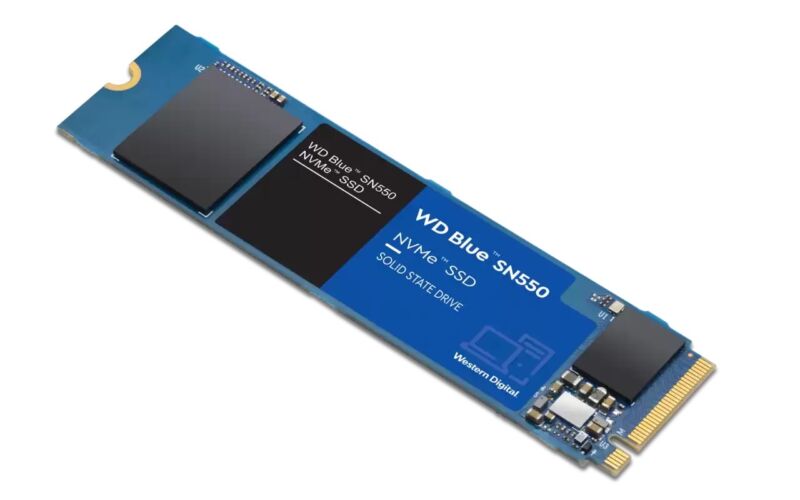Silent changes to Western Digital’s budget SSD may lower speeds by up to 50%

Enlarge / Newer versions of Western Digital's WD Blue SN550 may perform worse than older ones. (credit: Western Digital)
Western Digital's WD Blue SN550 budget SSD is a well-reviewed, popular NVMe device that has regularly shown up on various sites' "best SSD" lists since it was released at the tail-end of 2019. The drive uses a four-lane PCI Express 3.0 interface and was novel for being able to perform better than SATA SSDs for about the same amount of money.
But that may be changing, thanks to quiet behind-the-scenes component changes: Chinese site Expreview (via Tom's Hardware and ExtremeTech) says that a newer version of the drive manufactured in July 2021 was writing data at speeds of about 390MB per second after the drive's cache had filled up. According to Expreview, that's about half the speed of older versions of the SN550; Tom's Hardware measured speeds of about 610MB per second during a sustained write test on the original SN550, so the exact amount of performance degradation may vary. Because both the old and new versions of the SN550 use the same SSD controller, it seems likely that the slowdown is being caused by inferior NAND flash.
Modern SSDs typically pair a large amount of slower NAND flash (for capacity) and a smaller cache of faster flash memory (for the peak speeds advertised on the box). Depending on the SSD, this cache memory is designed to sustain anywhere between a few gigabytes' and a few dozen gigabytes' worth of writes before it has to fall back on the slower flash. Most of the time, you'll never notice the drive slowing down, because you're not going to fill the cache up all the way by using your computer for basic browsing, office work, or even photo editing.
Read 5 remaining paragraphs | Comments
from Tech – Ars Technica https://ift.tt/3gBG58F
Comments
Post a Comment